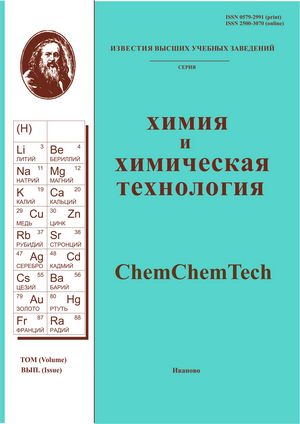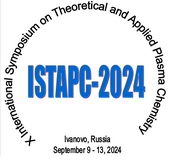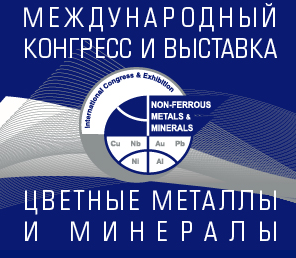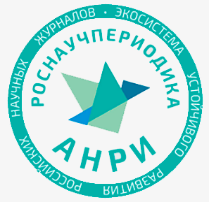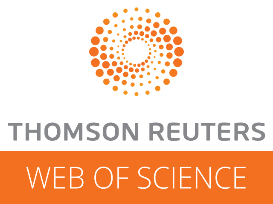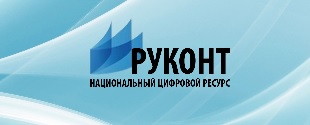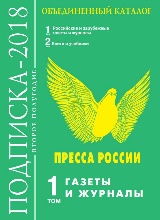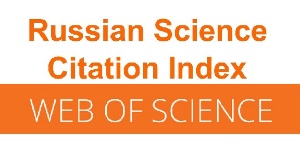МАТЕРИАЛЫ И ПРОТИВОКОРРОЗИОННЫЕ РАЗРАБОТКИ В МОРСКОЙ И ПОДВОДНОЙ ДОБЫЧЕ НЕФТИ И ГАЗА
Аннотация
Освоение углеводородных ресурсов континентального шельфа Российской Федерации и особенно его арктической части и Дальнего Востока, является крупнейшим инфраструктурным проектом, основанным на уникальных разведанных запасах нефти и газа. Континентальный шельф России является крупным национальным запасом углеводородов, который может обеспечить до 25% российской нефти и до 30% российского газа. Наиболее сложные запасы представляют собой сложные условия разработки – высокое давление и низкие температуры, могут находиться в глубоководных или арктических регионах. Современная добыча нефти осуществляется, зачастую, в экстремальных условиях: при высоких давлениях, в агрессивных морских средах и при низких температурах. Комплексный метод разработки месторождений позволяет длительное время поддерживать высокий уровень добычи углеводородов, снижая затраты за счет оптимизации используемых ресурсов и использования общей инфраструктуры. В перспективе наличие производственных мощностей и сервисных баз вблизи арктического шельфа позволит решать мультидисциплинарные задачи, затрагивающие различные сегменты и направления, такие как инженерно-технологический, природоохранный и другие. В данной статье рассматриваются факторы, влияющие на стойкость нефтегазопроводов к коррозии в морской среде. Приведен обзор методов упрочнения и легирования коррозионностойких сплавов для эксплуатации в морской и подводной среде при расширении границ применения традиционных технических сплавов. Проанализированы направления дальнейшего изучения механизмов коррозии и распространения трещин, которые могут привести к разрушению трубопроводов. Исследование наномасштабной коррозии, проанализированное в этой статье, может оказать глубокое влияние на характеристики деградации материалов, применимых ко всей отрасли.
Для цитирования:
Сизяков М.И. Материалы и противокоррозионные разработки в морской и подводной добыче нефти и газа. Изв. вузов. Химия и хим. технология. 2023. Т. 66. Вып. 4. С. 6-16. DOI: 10.6060/ivkkt.20236604.6739.
Литература
Kudryashov V.S., Deryabkina A.V. Analysis and prospects for the development of offshore oil and gas resources of the Arctic. Ekonom. Upravl. Narod. Khozvom. 2020. N 13(5). P. 73-78 (in Russian).
Boyarinov A.Yu., Litvinova O.V. Prospects for the development of the Arctic shelf. Mezhdunar. Nauch.-Issl. Zhurn. 2021. N 2-2(104). P. 19-22 (in Russian). DOI: 10.23670/IRJ.2021.103.2.034.
Brodt L.E. Best practices of oil and gas companies in the development of gas fields on the Arctic shelf. Arktika Sever. 2021. N 44. P. 30-44 (in Russian). DOI: 10.37482/issn2221-2698.2021.44.30.
Bilinchuk A.V., Ipatov A.I., Sitnikov A.V. Field-geophysical control of the development of low-permeable formations in wells with complex injection. The experience of Gazprom Neft. Neft. Khoz-vo. 2018. N 12. P. 34-37 (in Russian). DOI: 10.24887/0028-2448-2018-12-34-37.
Kolos V.Yu., Prihod'ko A.S. Modeling of hydraulic sys-tems for the control and regulation of field development pro-cesses. Vestn. Nauki Obrazovaniya. 2019. N 11-3(65). P. 30-32 (in Russian).
Guseynov Ch.S. In Arctic - new technical means and tech-nologies for the development of oil and gas fields in longterm freezing deepwater areas. IOP Conf. Ser. Mater. Sci. Eng. 2020. V. 734. Art. number 012174. DOI: 10.1088/1757-899X/734/1/012174.
Kontorovich A.E. Ways to develop oil and gas resources of the Russian Arctic sector. Vestn. Ross. Akad. Nauk. 2015. N 5-6(85). P. 420-430 (in Russian). DOI: 10.7868/S0869587315060171.
Astaf'ev D.A., Tolstikov A.V., Naumova L.A., Kabalin M.Yu. Promising directions of gas and oil exploration work on the Russian offshore in the XXI century. Vesti Gazovoy Nauki. 2018. N 4 (36). P. 4-18 (in Russian).
Offshore projects. Achievements and prospects [Electronic resource] URL: https://shelf.gazprom-neft.ru/upload/iblock/248/2019_12_09_gpnsh_buklet_ RUS.PDF.
Official website of Shelf. Gazprom-neft [Electronic resource] URL: https://prirazlomnoye.gazprom-neft.ru/development/social-responsibility-and-charity/.
Official website of Rosneft. Business. Offshore production [Electronic resource] URL: https://www.rosneft.ru/business/Upstream/offshore/.
Troshin M.S. The impact of international economic sanctions on the development of the Russian economy. Mosk. Ekonom. Zhurn. 2021. N 3. P. 169-175 (in Russian). DOI: 10.24411/2413-046X-2021-10133.
Vagapov R.K., Zapevalov D.N., Ibatullin K.A. Investigation of corrosion of gas production infrastructure facilities in the presence of CO2 by analytical control methods. Vesti Gazovoj Nauki. 2020. N 3(45). P. 81-92 (in Russian).
Prishchepo D., Khruleva E., Ponomarev A., Martyushev D., Sidorov M. Development of domestic technologies in the field of exploitation of offshore wells of the Arctic shelf of Russia. Territoriya Neftegaz. 2019. N 3. P. 56-61 (in Russian).
Iannuzzi M., Barnoush A., Johnsen R. Materials and corrosion trends in offshore and subsea oil and gas production. Mater. Degrad. 2017. V. 1. N 1. P. 2. DOI: 10.1038/s41529-017-0003-4.
Laletina A.S. OPEK. Gaz. Truboprovody. Pravo. M.: Prospekt. 2019. 128 p. (in Russian).
Hou B., Li X., Ma X., Du C., Zhang D., Zheng M., Xu W., Lu D., Ma F. The cost of corrosion in China. Mater. Degrad. 2017. V. 1. N 1. P. 4. DOI: 10.1038/s41529-017-0005-2.
Tawancy H.M., Al-Hadhrami L.M., Al-Yousef F.K. Analysis of corroded elbow section of carbon steel piping system of an oil–gas separator vessel. Case Stud. Eng. Fail. Anal. 2013. V. 1. N 1. P. 6-14. DOI: 10.1016/j.csefa.2012.11.001.
Cheng Y.F. Stress corrosion cracking of pipelines. In: Wiley Series in Corrosion. Ed. by R.V. Revie. USA: John Wiley & Sons. 2013. V. 15. P. 4-10. DOI: 10.1002/9781118537022.
Vanaei H.R., Eslami A., Egbewande A. A review on pipe-line corrosion, in-line inspection (ILI), and corrosion growth rate models. Internat. J. Pres. Vessels Piping. 2017. V. 149. P. 43-54. DOI: 10.1016/j.ijpvp.2016.11.007.
Matrizaev M.Yu., Khallyev N.H. Design features of off-shore field pipelines in modern conditions. Petrol. Eng. 2019. N 2(17). P. 104-110 (in Russian). DOI: 10.17122/ngdelo-2019-2-104-110.
Chen M., Zhang H., Chen L., Fu D. An electrochemical method based on OCP fluctuations for anti-corrosion alloy composition optimization. Anti-Corros. Methods Mater. 2018. V. 65. N 3. P. 325-330. DOI: 10.1108/ACMM-03-2018-1913.
Bruschi R., Bartolini L. M., Cherubini P., Torselletti E., Vitali L. Meeting the challenges of the upcoming development of subsea fields: from carbon steel pipelines to new materials and pipe concepts. Proc. of the 27th Internat. Ocean and Polar Eng. Conf. San Francisco, California. 2017. P. 1-21.
Warke W.R. Stress-Corrosion Cracking. In: Failure Analy-sis and Prevention. Ed. by W.T. Becker, R.J. Shipley. ASM International. 2002. V. 11. DOI: 10.31399/asm.hb.v11.9781627081801.
Kushnarenko V.M., Chirkov Yu.A., Poyarkova E.V., Kleshchareva G.A. Evaluation of the resistance of steels to hydrogen sulfide cracking. Art. in coll. of conf. mater. « Advanced scientific-technical and socio-humanitarian projects in modern science ». 2019. P. 21 (in Russian).
Sagadeev I.R., Erofeev V.V., Sharafiev R.G., Al'mukhametov A.A., Kireev I.R., Gil'manshin R.A., Yakupov V.M. Investigation of the mechanism of corrosion destruction of metal in hydrogen sulfide-containing media. Neftegaz. Delo. 2017. N 1(15). P. 99-102 (in Russian).
Davydkin M.V., Nemykina O.V. Testing of steels for hydrogen sulfide corrosion cracking. Korroziya: Mater. Zashchita. 2015. N 11. P. 18-25 (in Russian).
Bulkleshev D.O. Investigation of stress intensity in the process of corrosion cracking of steel of main gas pipelines. Universum: Tekhn. Nauki. 2019. N 2(59). P. 17-21 (in Russian).
Sergeev N.N., Izvol'skiy V.V., Sergeev A.N., Kutepov S.N. The influence of the chemical composition of steel 23x2g2t on the resistance against corrosion cracking. Izv. Tul. Gos. Univ. 2019. N 9. P. 409-420 (in Russian).
Stepanov P.P., Barykov A.M., Parunov A.B., Elagina O.Yu. Resistance of metal pipes made of high-strength steels to hydrogen cracking in marine environments containing hydrogen sulfide. Nauka Tekhnika Gaz. Promsti. 2015. N 1. P. 51-56 (in Russian).
Pioszak G.L., Gangloff R.P. Hydrogen environment assisted cracking of modern ultra-high strength martensitic steels. Metallurg. Mater. Transact. A. 2017. V. 48. N 9. P. 4025-4045. DOI: 10.1007/s11661-017-4156-0.
Nešić S. Key issues related to modelling of internal corrosion of oil and gas pipelines – A review. Corrosion Sci. 2007. V. 49. N 12. P. 4308-4338. DOI: 10.1016/j.corsci.2007.06.006.
Krylov P.V., Shiryaev A.G., Chikalov S.G., Pyshmintsev I.Yu., Chetverikov S.G., Reskin S.A. Development of steel grades for pipes of increased and high strength, resistant to carbon dioxide corrosion, in coldresistant design. Territoriya «NEFTEGAS». 2017. N 12. P. 48-53 (in Russian).
Chechurina M.N., Sokolenko V.E. Comparative analysis of national innovation systems of the countries of the Arctic region. Ekonomika: Vchera, Segodnya Zavtra. 2017. N 9A (7). P. 115-131 (in Russian).
Mulenko V.V., Saprykina K.M. Environmental and economic risks of developing offshore oil and gas fields in the Far North. Territoriya “NEFTEGAS”. 2016. N 2. P. 94-99 (in Russian).
Alvaro A., Akselsen O. M., Ren X., Kane A. in Proc. of the Twenty-fourth Internat. Ocean and Polar Eng. Conf. 2014. P. 247–254.
Oryshchenko A.S., Malyshevskii V.A., Petrov S.N., Shumilov E.A. Relation between the Degree of Alloying, Structure, And Mechanical Properties of High-Strength Steel. Steel Translation. 2018. V. 48. N 3. P. 143-148. DOI: 10.3103/S0967091218030099.
Craig B.D. On the contradiction of applying rolled threads to bolting exposed to hydrogen-bearing environments. Oil Gas Facilities. 2015. V. 4. N 06. P. 66-71. DOI: 10.2118/178431-PA.
Dolgikh S.A., Ibragimov N.G., Tkacheva V.E., Shakirov F.Sh. Experience in the operation of the cathodic protection system of well casings on the territory of PJSC TATNEFET. Art. in coll. of sci. mater. «TATNIPINEFT'». 2017. P. 467-473 (in Russian).
Vyboyshchik M.A., Ioffe A.V. Development of steel for carbon dioxide corrosion in oil-producing environments. Perspektiv. mater. 2017. P. 115-166 (in Russian).
Zyryanov A.O., Ioffe A.V., Tetyueva T.V., Vyboyshchik M.A. Corrosion features of tubing made of 15X5MFBH steel in environments containing CO2 and CO2/H2S. Art. in coll. of conf. mater. «Prochnost' neodnorodnyh struktur – Prost 2018». 2018. P. 198 (in Russian).
Kane R.D., Wilhelm S.M., Oldfield J.W. Review of Hydrogen Induced Cracking of Steels in Wet H2S Refinery Ser-vice. In: International Conference on Interaction of Steels with Hydrogen in Petroleum Industry Pressure Vessel Service. New York, NY: Materials Properties Council. 1989. 28 March, Paris, France.
Kappes M., Brownlee K., Bruno T.V. Sulfide stress cracking of nickel-containing low-alloy steels. Corros. Rev. 2014. V. 32. N 3-4. P. 101-128. DOI: 10.1515/corrrev-2014-0027.
Snape E. Roles of composition and microstructure in sulfide cracking of steel. Corrosion. 1968. V. 24. N 9. P. 261-282. DOI: 10.5006/0010-9312-24.9.261.
Fielding L.C.D. The bainite controversy. Mater. Sci. Technol. 2013. V. 29. N 4. P. 383-399. DOI: 10.1179/1743284712Y.0000000157.
Cancio M., Eloff B., Kissner G., Valdez M., Vouilloz F.J. High strength low alloy steel for HPHT wells. In: Proc. of the Annual Offshore Technology Conf. 2014. P. 1. DOI: 10.2118/24746-MS.
Randle V. Grain boundary engineering: an overview after 25 years. Mater. Sci. Technol. 2010. V. 26. N 3. P. 253-261. DOI: 10.1179/026708309X12601952777747.
Kuzmina M., Ponge D., Raabe D. Grain boundary segregation engineering and austenite reversion turn embrittlement into toughness: example of a 9 wt.% medium Mn steel. Acta Materialia. 2015. V. 86. P. 182-192. DOI: 10.1016/j.actamat.2014.12.021.
Watanabe T. Grain boundary engineering: historical perspective and future prospects. J. Mater. Sci. 2011. V. 46. N 12. P. 4095-4115. DOI: 10.1007/s10853-011-5393-z.
Rhodes P.R., Skogsberg L.A., Tuttle R.N. Pushing the limits of metals in corrosive oil and gas well environments. Corrosion. 2007. V. 63. N 1. P. 63-100. DOI: 10.5006/1.3278334.
Talbot D.E.J., Talbot J.D.R. Corrosion science and tech-nology. CRC press. 2018. 596 p.
Bruemmer S.M., Olszta M.J., Toloczko M.B., Schreiber D.K. Grain boundary selective oxidation and intergranular stress corrosion crack growth of high-purity nickel binary alloys in high-temperature hydrogenated water. Corros. Sci. 2018. V. 131. P. 310-323. DOI: 10.1016/j.corsci.2017.11.024.
Xie Y., Wu Y., Burns J., Zhang J. Characterization of stress corrosion cracks in Ni-based weld alloys 52, 52M and 152 grown in high-temperature water. Mater. Character. 2016. V. 112. P. 87-97. DOI: 10.1016/j.matchar.2015.12.005.
Rebak R.B., Ortiz M.R., Iannuzzi M., Kappes M., Mishra A., Rodriguez M.A. Effect of thermal treatment on the localized corrosion behavior of alloy 718. In: EUROCORR. 2014. P. 8–12.
Dong J.X., Zhang M.C., Mannan S.K. Microstructures and the structure stability of inconel 725, a new age - hardenable corrosion resistant superalloy. Acta Metallurgica Sinica. 2009. V. 16. N 2. P. 145-150.
Yoo S.C., Choi K.J., Kim T., Kim S.H., Kim J.Yo., Kim J.H. Microstructural evolution and stress-corrosion-cracking behavior of thermally aged Ni-Cr-Fe alloy. Corros. Sci. 2016. V. 111. P. 39-51. DOI: 10.1016/j.corsci.2016.04.051.
You X., Tan Y., Zhao L., You Q., Wang Y., Ye F., Li J. Effect of solution heat treatment on microstructure and electrochemical behavior of electron beam smelted Inconel 718 superalloy. J. Alloys Comp. 2018. V. 741. P. 792-803. DOI: 10.1016/j.jallcom.2018.01.159.
Paxton A.T., Katzarov I.H. Quantum and isotope effects on hydrogen diffusion, trapping and escape in iron. Acta Materialia. 2016. V. 103. P. 71-76. DOI: 10.1016/j.actamat.2015.09.054.
Yakubov V., Lin M., Volinsky A.A., Qiao L., Guo L. The hydrogen-induced pitting corrosion mechanism in duplex stainless steel studied by current-sensing atomic force microscopy. Mater. Degrad. 2018. V. 2. Art. number 39. DOI: 10.1038/s41529-018-0062-1.
Thomas S., Sundararajan G., White P., Birbilis N. The effect of absorbed hydrogen on the corrosion of steels: re-view, discussion, and implications. Corrosion. 2017. V. 73. N 4. P. 426-436. DOI: 10.5006/2242.
Wang X.Z., Luo H., Luo J.L. Effects of hydrogen and stress on the electrochemical and passivation behaviour of 304 stainless steel in simulated PEMFC environment. Elec-trochim. Acta. 2019. V. 293. P. 60-77. DOI: 10.1016/j.electacta.2018.10.028.
Deng Y., Hajilou T., Wan D., Kheradmand N., Barnoush A. Insitu micro-cantilever bending test in environ-mental scanning electron microscope: Real time observation of hydrogen enhanced cracking. Scripta Materialia. 2017. V. 127. P. 19-23. DOI: 10.1016/j.scriptamat.2016.08.026.
Hajilou T., Deng Y., Rogne B. R., Kheradmand N., Barnoush A. In situ electrochemical microcantilever bending test: A new insight into hydrogen enhanced cracking. Scripta Materialia. 2017. V. 132. P. 17-21. DOI: 10.1016/j.scriptamat.2017.01.019.
Golovin Y.I., Korenkov V.V., Razlivalova S.S. The Effect of Low-Amplitude Oscillations of the Load on the Local Stiffness of Materials in Loaded Nanocontacts Detected by Methods of Dynamic Nanoindentation. Adv. Mater.Technol. 2018. V. 2. P. 3-8. DOI: 10.17277/amt.2018.02.pp.003-008.
Wu D., Jang J.S.C., Nieh T.G. Elastic and plastic deformations in a high entropy alloy investigated using a nanoindentation method. Intermetallics. 2016. V. 68. P. 118-127. DOI: 10.1016/j.intermet.2015.10.002.
Lai H.D., Jian S.-R., Tuyen L.T.C., Le P.H., Luo C.-W., Juang J.-Y. Nanoindentation of Bi2Se3 thin films. Microm-achines. 2018. V. 9. N 10. P. 518. DOI: 10.3390/mi9100518.
Martin M. L., Pundt A., Kirchheim R. Hydrogen-induced accelerated grain growth in vanadium. Acta Materialia. 2018. V. 155. P. 262-267. DOI: 10.1016/j.actamat.2018.06.011.
Sun J.B., Zhang G.A., Liu W., Lu M.X. The formation mechanism of corrosion scale and electrochemical characteristic of low alloy steel in carbon dioxide-saturated solution. Corrosion Sci. 2012. V. 57. P. 131-138. DOI: 10.1016/j.corsci.2011.12.025.
Wranglen G. Pitting and sulphide inclusions in steel. Cor-rosion Sci. 1974. V. 14. P. 331–349. DOI: 10.1016/S0010-938X(74)80047-8.
Bertali G., Scenini F., Burke M. The effect of residual stress on the preferential intergranular oxidation of alloy 600. Corrosion Sci. 2016. V. 111. P. 494–507. DOI: 10.1016/j.corsci.2016.05.022.
Nguen V.Ch., Kao N.L., Dong V.K. Investigation of corrosion of AN-36 structural steel in the marine environment of Vietnam. ChemChemTech [Izv. Vyssh. Uchebn. Zaved. Khim. Khim. Tekhnol.]. 2021. V. 64. N 10. P. 139-144 (in Russian). DOI: 10.6060/ivkkt.20216410.6496.
Carter C.B., Williams D.B. Transmission electron microscopy: Diffraction, imaging, and spectrometry. Springer. 2016. 543 p.
Hayden S.C., Chisholm C., Grudt R.O., Aguiar J.A., Mook W.M., Kotula P.G., Pilyugina T.S., Bufford D.C., Hattar Kh., Kucharski T.J., Taie I.M., Ostraat M.L., Jungjohann K.L. Localized corrosion of low-carbon steel at the nanoscale. Mater. Degrad. 2019. V. 3. N 1. P. 17. DOI: 10.1038/s41529-019-0078-1.
Jungjohann K.L., Evans J.E., Aguiar J.A., Arslan I., Browning N.D. Atomic-scale imaging and spectroscopy for in situ liquid scanning transmission electron microscopy. Microsc. Microanal. 2012. V. 18. P. 621–627. DOI: 10.1017/S1431927612000104.

